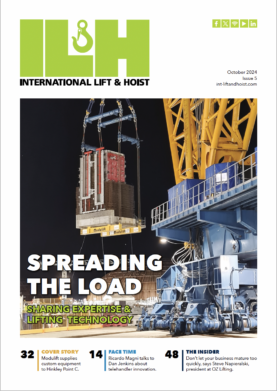Cross-section of Shipping Industry Reports Making More than 17 Million Lifts per Year
The Maritime Lifting Solutions Workshop, held last week in Mobile, Ala., attracted more than 100 crane and rigging managers responsible for planning, execution, and logistics of load handling for the maritime industry. “Many of the attendees from organizations such as Crowley Maritime Corp., Grieg Star Shipping, McDonough Marine Service, and Ports America, are handling unique, break-bulk loads,” said Mike Parnell, president of Industrial Training International (ITI), Woodland, Wash., which hosted the event with the Alabama State Port Authority, Barnhart Crane & Rigging, and Certex USA.
During the event, each attendee was polled regarding the number cranes these organizations are using for both standard and critical lifts in their facilities per year. Using a Lift Count Calculator devised by ITI, conference attendees reported that, in aggregate, they own 783 cranes or hoists, which are making more than 17 million standard lifts per year and 161,000 critical lifts per year.
Attendees used their own facilities’ definitions for standard and critical lifts. However most agreed that a standard lift was one that was not documented; critical lifts are documented. The types of cranes considered for the calculation included container cranes, portal/barge cranes, mobile cranes, overhead cranes, electric hoists, and tower cranes.
“Using a calculator like this helps facility management appreciate the volume of load handling that occurs daily, monthly, and yearly,” said Parnell. “This data can then be used to influence investment in processes and procedures, such as training, maintenance schedules, and inspection programs.”
One Louisiana-based shipyard with 14 locations first used this calculator more than 10 years ago to guide facility investments. “This company was surprised by the volume of lifts it was conducting. This led to the adoption of a comprehensive crane and rigging procedures manual and the implementation of an enhanced training program that taps funds from state grants for employee skills development. The result has been reduced accidents and a substantial improvement in their overall load handling process,” said Parnell.
The calculator can be downloaded from the home page at www.iti.com; or find it in the Resources section of the website.











